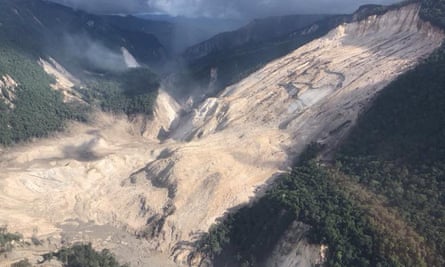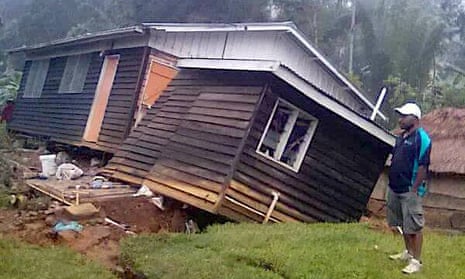The impoverished Pacific nation of Papua New Guinea has been devastated by a 7.5 magnitude earthquake that has claimed at least 16 lives and brought the heartland of the country to its knees.
The earthquakestruck the Southern Highlands, Hela Province and the Western Highlands region early on Monday morning, but the extent of the devastation took days to emerge because of the area’s remoteness.
Southern Highlands governor William Powi said on Wednesday that authorities in his region were still trying to assess the extent of the damage, and his people were traumatized, with the disaster causing “catastrophic havoc and destruction.”
Uvenama Rova, secretary general of the PNG Red Cross, said he had confirmed reports of 11 deaths in the southern highlands region and five in Hela province, though his contacts in the affected regions reported “many” more deaths, entire villages buried under landslips, and mass grieving by affected communities.

The Red Cross also said it knew of houses that had “sunk” in the town of Tari in Hela province, where concrete roads had also been destroyed, bridges snapped and the town’s hospital forced to turn away patients.
Rova said according to information from ExxonMobil, which had mining operations in the affected regions, more than 10,000 families were affected by the quake.
ExxonMobil has suspended its $19bn liquefied natural gas (LNG) plant, the country’s biggest export earner, as dozens of aftershocks continue day and night, including a 5.7 quake on Tuesday afternoon, the US Geological Survey reported.
Information has been hard to come by in the affected regions, as many roads have been blocked by major land slides, and essential services such as power and communications cut to remote villages, with further landslips expected as heavy rain fell overnight.
“This is the largest earthquake we’ve ever had and its right in the centre of our country, and we don’t know how many casualties yet, we are still in the assessment stage,” said Rova.
“But we do know schools and infrastructure are devastated, and normal activities within Tari and Mendi town have shut down.”
A local blogger said there were reports of dozens or even hundreds of people killed in the Southern Highlands regions, though the Guardian and the Red Cross could not confirm those reports.
Locals in Mendi searching for survivors and victims of the Great Papuan Earthquake #PNG Photo Credit: Jaycoz Pokura/Facebook pic.twitter.com/G8ASaJWNEL
— MARTYN NAMORONG (@MartynNamorong) February 27, 2018
There are reports of dozens perhaps hundreds of deaths in the remote Kutubu region of the Southern Highlands Province #PNG #GreatPapuanEarthquake Photo credit: Semix Sukupii pic.twitter.com/q14SfkPdxQ
— MARTYN NAMORONG (@MartynNamorong) February 27, 2018
Prime Minister Peter O’Neill and a team of ministers visited the affected areas on Tuesday, and an emergency meeting of the PNG cabinet was scheduled for Wednesday, with the government expected to declare a national state of emergency.
Australia’s foreign minister Julie Bishop said her government had already received a request for help from PNG, and would be sending a RAAF C-130 to conduct aerial surveillance of the affected regions, and provide logistical support to the defence force.
In a statement O’Neill said information was still coming in regarding the level of devastation and soldiers were on route to the affected regions.
“There are communities that have suffered from this natural disaster, and we are sending our soldiers and other Government agencies to support our people in their time of need.”
“We know that there have been houses lost, roads cut by land slips and disruption to services.”
This article was amended on 1 March to correct the factual error that that the earthquake was the strongest to hit the country.
